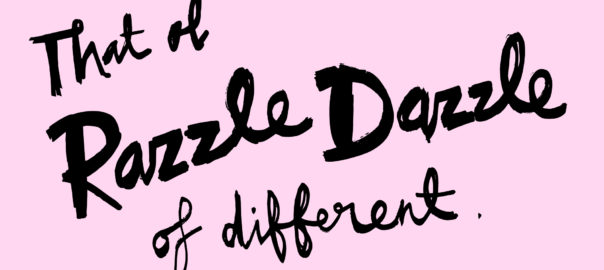That ol' Razzle Dazzle of Different
Norman Wilkinson was a talented, if conservative, marine painter and poster artist.
But he had a dazzling idea.
The open waters around the British Isles were a dangerous place for allied ships during the first world war.
Each vessel a sitting duck, unable to hide from the enemy submariners lurking below the surface.
Throughout 1917, merciless German U-boats decimated British and American vessels at an alarming rate.
Hundreds of ships per month lost to their deadly patrols.
At its worst, eight ships per day were consigned to watery graves.
Severing critical British trade and supply links.
Returning from submarine patrol and the dangers of the Gallipoli campaign, Norman Wilkinson began service on a British minesweeper.
It was here that he came up with his revolutionary and experimental approach to naval defence.
An audacious idea that played a vital role in the protection of British naval and trade vessels.
Wilkinson realised that the Admiralty were trying to solve the wrong problem.
It was impossible to find a way to sufficiently camouflage and hide away all ships, in all conditions, at sea.
The variations in sky colour, cloud cover and wave height were simply too many for any typical camouflage colours, such as black, grey or blue, to work.
So he did the opposite.
Wilkinson devised a fiendishly clever plan to draw attention to vessels rather than hide them away.
Favouring disturbance over disguise.
Optically distorting the appearance of each ship to confuse the enemy rather than conceal.
Suitably impressed, the Admiralty made Wilkinson the head of the new dazzle camouflage section.
Influenced by British avant garde painters like Wyndham Lewis and David Bomberg, Wilkinson assembled a team of artists and model makers from the Royal Academy.
Edward Wadsworth, founder of Vorticism the British artistic movement that grew out of Cubism supervised the patterns.
Consisting almost exclusively of women, the team of students from the RA set about the patternation of the ships.
Each side of every vessel a different design.
Every ship an absolute one-off.
Quite literally a work of art.
A cacophony of intersections and angles.
The contrasting geometric shapes and colours interlocked and dissected, creating optical illusions designed to disorientate.
Even the smokestacks were decorated to appear to be leaning in a different direction.
When the German periscopes broke through the waters they had only seconds to locate their target and calculate its speed and course.
Shooting not directly at the ship, but where the vessel would be by the time the torpedo got there.
The problem now facing the German submariners was that the manually operated coincidence rangefinders needed to adjust so that two half-images of the target aligned, completing the picture.
But it was hard to align two halves when what you were looking at didn't make sense: the bold shapes at the bow and the stern broke up the form of the ships.
Making it more difficult for the enemy to calculate an accurate angle of attack.
During the first world war, more than 2,000 Cubism-inspired dazzle ships were operational, and while never scientifically proven, it's safe to say that some patterns worked better than others, and that traveling speeds played a major part.
Recent tests indicate that similar patterns tested on military vehicles, such as Land Rovers, can cause an unguided rocket-propelled grenade, fired at a target traveling around 90km/h, to miss by a metre or more.
The difference between life and death.
Its often all too easy to work within the conventions of a category or situation, gravitating to like-minded ideas.
Take risks.
Iterate as you go, because it no longer takes 100 years to prove your theory.
When you do the polar opposite of what you'd normally do, new ideas, viewpoints and solutions open up in front of you.
The final answer may not end up being the exact opposite, but you'll have more variables on the table in the process.
And possibly a bit of that ol' razzle-dazzle.
– DB




